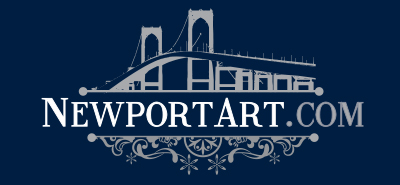
Born in Cincinnati, Ohio, John Twachtman became a leading Impressionist and Tonalist painter of atmospheric landscapes of the late 19th century. He was a founding member of Ten American Painters, a group that broke away from the disciplines of the Academy of Design in New York City. Art historian William Gerdts described Twachtman as “the most consistently admired of all the Impressionists painters until the denunciation of Impressionism in American in the wake of more avant-garde developments.(108).
He first studied at the Ohio Mechanics Institute, and in 1874 began to paint with Frank Duveneck, an artist of the Munich School of direct, impasto brushwork, often in dark tones. In 1875, Twachtman went to Europe and studied at the Royal Academy in Munich and in 1877, went with Duveneck and William Merritt Chase to Venice. A year later, he taught at Duveneck’s school in Florence, and in 1881 went to Holland with Julian and John Weir.
His style changed from the dark sombre tones of the Munich School in 1883, when he went to Paris and studied at the Academie Julian with Jules Lefebvre and Louis Boulanger and became influenced by James Whistler’s Tonalism and the French Impressionists. From that time, his style was characterized by low-key gray and green tones, almost monochromatic, and smooth texture. In the 1890s, his paintings became lighter, and as he got older, his canvases became even brighter and more impressionistic, and he painted a number of winter scenes. He purchased a 17-acre farm near Greenwich, Connecticut where he did many landscapes dealing more with the essence of nature than the reality. He also taught summer classes at Gloucester and did some illustration work for Scribners.
In 1893, he won a Silver Medal from the World’s Columbian Exposition in Chicago, and in 1894 was commissioned by Charles Carey of Buffalo, New York to do a series of paintings of Niagara Falls, which was quite a change to his usual subjects of painting the woods of Connecticut. The next year Major William Wadsworth of Genesco, New York commissioned him to do a series of four paintings of the western half of Yellowstone Park in Wyoming. Arriving in September of 1895, he was so taken with the scenery and its contrast to his own environment that he did extra paintings for himself.
Source:
Michael David Zellman, Three Hundred Years of American Art
William Gerdts, American Impressionism
Peter Hassrick, Drawn to Yellowstone
